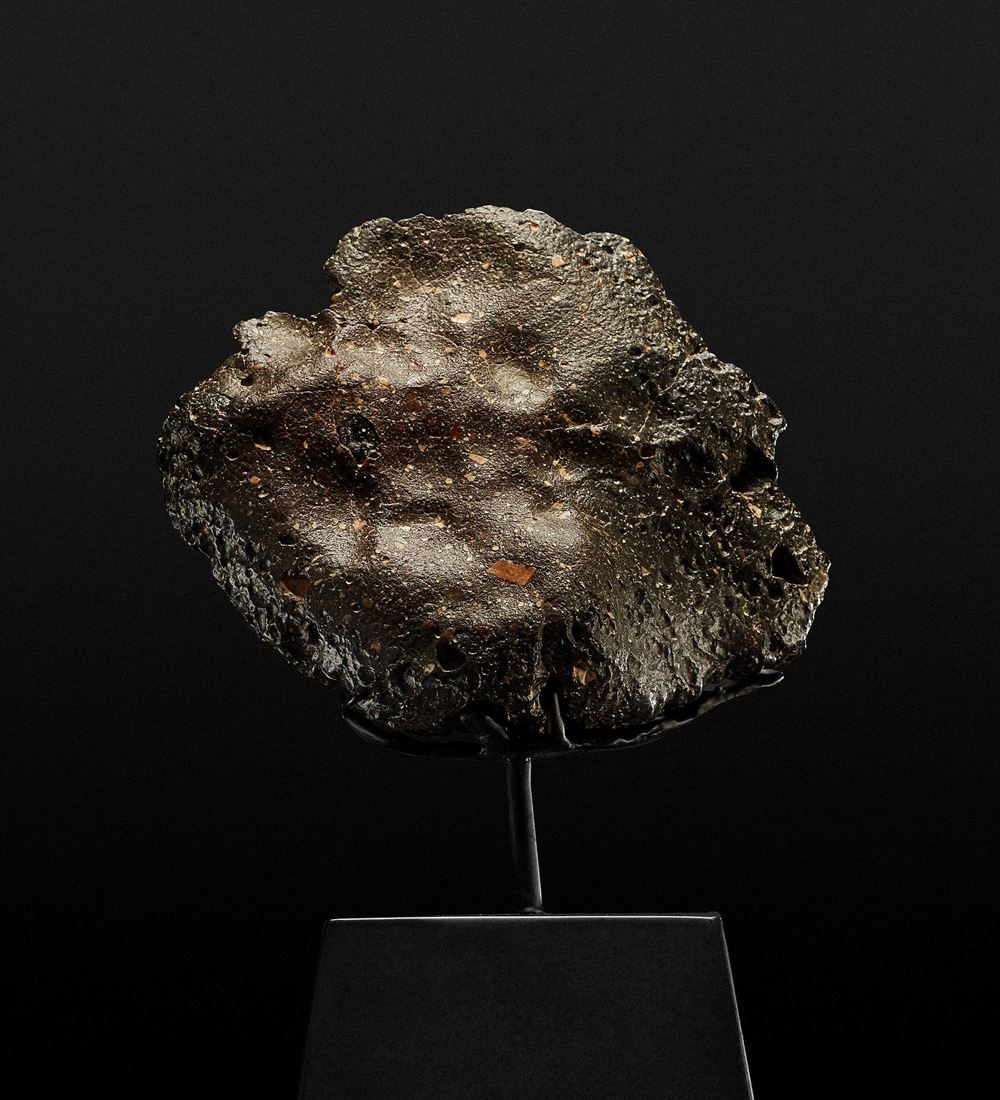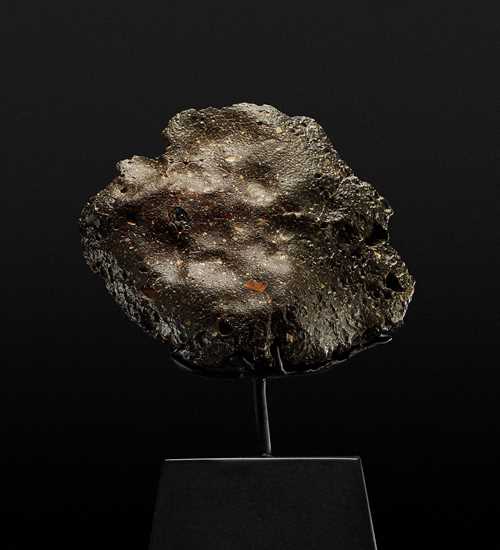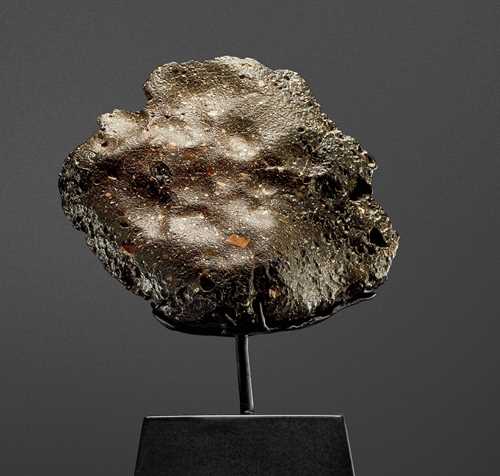
Lot 1839* - S17 Out of This World - Tuesday, 28. June 2022, 04.00 PM
MOON METEORITE
Official Meteorite Name: NWA 13112
Found: 2019
3.1–4.4 billion years
12 x 9 x 3 cm
348 gm
Found: 2019
3.1–4.4 billion years
12 x 9 x 3 cm
348 gm
Provenance: Swiss private collection
The Moon’s desolate beauty has been a source of fascination and curiosity throughout history and has inspired a rich cultural and symbolic tradition.
It makes Earth more livable by moderating our home planet’s movement on its axis, leading to a relatively stable climate. It also causes tides, creating a rhythm that has guided humans and animals for thousands of years. Centuries of observation and scientific investigation have been centred on the nature and origin of the Moon. Today most scientists believe it was formed during a collision between Earth and another small planet, about the size of Mars. The debris from this impact collected in an orbit around Earth to finally form the Moon we know today.
How do Moon Meteorites reach our planet?
When asteroids strike the Lunar surface, chunks of the Moon are launched into space. After thousands of years and a journey through our Milky Way galaxy these specimens find their way very rarely onto earth. Less than 0.1% of all meteorites recovered are lunar in origin, with less than 150 kg of meteorites originating from the Moon known to exist.
These meteorites are known to be from the Moon because they have elemental and isotopic compositions that are a match to those samples that have been measured by orbiting NASA spacecraft, surface landers and rovers.
The size and the elegant shape of the here presented specimen are simply stunning. It still retains the black colored crust, indicating that it hit earth
very recently. We strongly believe this is one of the most beautiful Moon Meteorites ever discovered.
月球陨石
陨石的正式名称: NWA 13112发现: 2019年年龄:3.1-4.4亿年12 x 9 x 3 厘米348 克
出处:瑞士私人收藏月亮的孤独之美在历史上一直让人着迷和好奇,并激发了丰富的文化和象征传统。月球通过缓和我们的母星在其自身轴线上的运动,使地球更加宜居,导致相对稳定的气候。它还造成了潮汐、退潮和流动,创造了几千年来指导人类和动物的节奏。几个世纪以来,人类一直关注着月球的性质和起源。目前的知识表明,它是在地球和另一个与火星一样大小的小行星之间的碰撞中形成的。这次撞击产生的碎片聚集在我们的轨道上,通过引力作用,最终形成了我们今天所知的月球。这里展示的极其罕见的月球陨石可能是地球上发现的最美丽的月球碎片之一。当小行星撞击月球表面时,月球的碎片被抛入太空。经过几千年和几万年的时间,以及在我们的银河系中的旅行,这些标本很少能找到他们的方式来到地球。在所有获得的陨石中,只有不到0.1%是来自月球的,而已知来自月球的陨石总共不到150公斤。众所周知,这些陨石来自月球,因为它们的元素和同位素组成与美国宇航局的轨道航天器、漫游者和宇航员在月球表面测量的样本相匹配。
CHF 60 000 / 90 000 | (€ 61 860 / 92 780)
Sold for CHF 79 600 (including buyer’s premium)
All information is subject to change.



